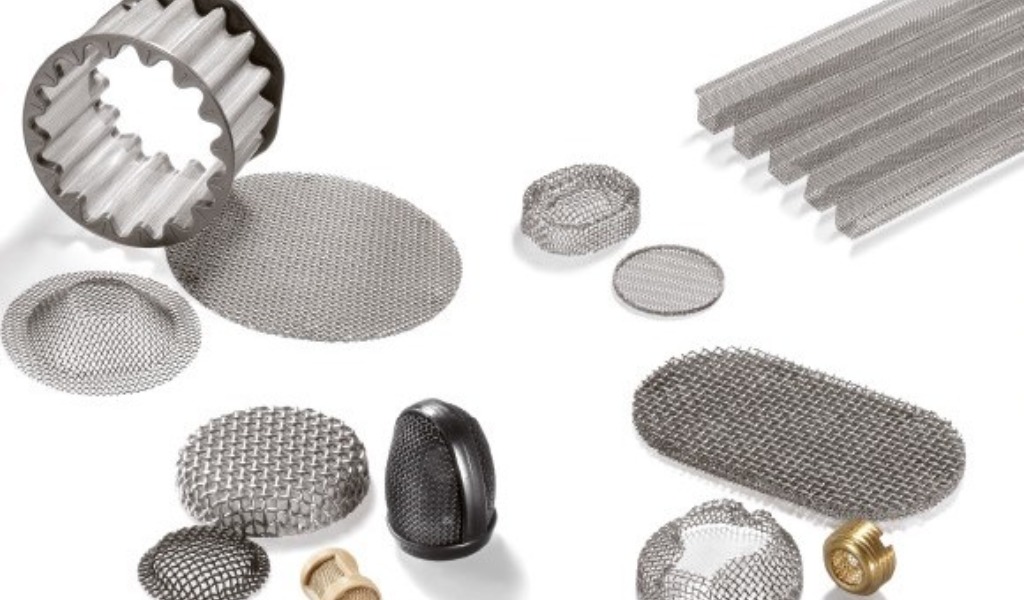
Woven wire mesh filters offer the customization, versatility, and durability to deliver desirable filtration capabilities to a wide range of filtration applications. To help you better understand how wire mesh can benefit your process, we created this ultimate guide to help illustrate the level of filtration achievable with woven wire mesh filters.
Fill out the form for a downloadable PDF version of the guide you can reference later. (Don't forget, you can keep scrolling to read without giving us your email!)
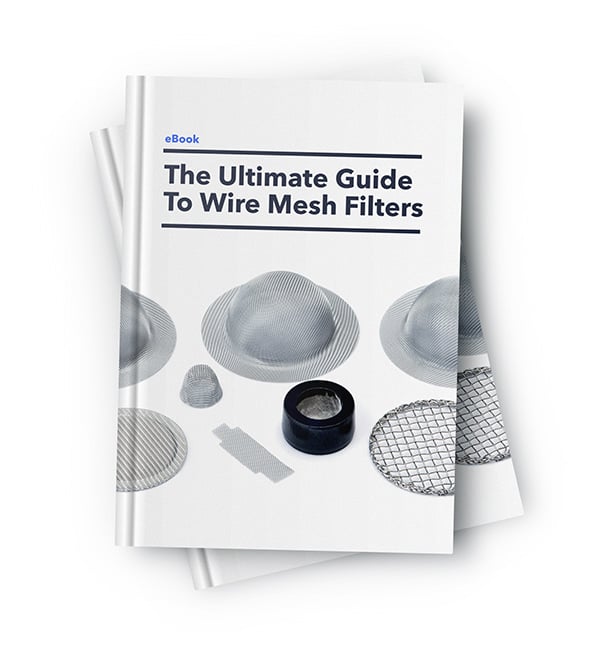
Looking for something specific? Use the buttons below to be directed to a particular subject.
Mesh filters are best defined as a network of metallic wires that are methodically woven together, forming a pliable filter media. As parameters, such as wire diameter, mesh count, and weave pattern, are fully customizable, mesh filters have precise mesh openings.
Now, filter mesh can be made from a wide range of alloys, including stainless steel, plain steel, Hastelloy, nickel, and titanium. This helps make mesh filters one of the most versatile and durable filter media on the market, delivering optimal filtration to countless applications.
Filter cloth is generally fabricated as two-dimensional, meaning a single piece of filter cloth has a single filtration layer. This restricts the number of pore openings to the surface area of the filter. This can restrict throughput for some high-volume operations.
SPW – Single Plain Dutch Weave
SPW single plain dutch weave is a filter cloth designed to reduce the space between the cloth’s weft wires. This helps create a weave that features approximately five more weft wires than warp wires, maximizing the durability of the filter.
DTW-S – Dutch Twilled Weave
DTW-S Dutch Twilled Weave is a filter cloth weave type that utilizes a traditional 2/2 twilled weave to place the weft wires closely together. Thinner wires are used in the weft direction to achieve this level of wire density while providing adequate throughput.
RPD-S – Reverse Plain Dutch Weave
RPD-S Reverse Plain Dutch Weave is a filter cloth that consists of a plain weave featuring a reverse wire diameter configuration. This involves weaving the mesh filter with closely placed warp wires that are thinner than the weft wires, making for a filter with a unique balance of durability and flow rate.
TRD-S – Twilled Reverse Dutch Weave
TRD-S Twilled Reverse Dutch Weave is a filter cloth that resembles the profile of the reverse plain dutch weave; however, this specific weave pattern uses a 2/2 twilled weave. This results in a mesh filter with warp wires that will not distort as much as a plain weave, which is ideal for filtration belts.
BMT/BMT-ZZ-S – Broad Mesh Twilled Dutch Weave
Broad Mesh Twilled Dutch Weave is a filter cloth that uses a unique 2/2 weave with increased weft wire spacing. This increased spacing creates a filter cloth that features an adequate amount of filtration surface area.
A specialized zigzag pattern can also be employed to maximize the stability and throughput capabilities of the mesh filter.
Three-dimensional filter mesh is fabricated with a three-dimensional profile, meaning a single piece of filter cloth features two offset filtration layers. This unique design doubles both the mesh openings and filtration surface area, doubling the throughput the filter facilitates within a filter system.
RPD HIFLO-S – High-Performance Weave
RPD HIFLO-S is a filter cloth that features two layers of reverse wire diameter plain weave that are stacked and offset during the weaving process. As there are double the pore openings and double the filtration surface area, this particular weave type offers a balance of flowrate and accuracy that is not achievable with traditional two-dimensional weave patterns.
As stated above, several parameters are predetermined when fabricating a mesh filter. That said, the layer configuration you choose stands as one of the most integral elements of a filter as it will dictate how durable your filter is.
So, should you use a single- or multi-layer configuration? Well, the answer is ultimately determined by the material and particles you’re filtering.
For instance, if you are filtering a liquid with contaminant particles of variating sizes, you may benefit from using a multi-layer as the larger contaminants would potentially damage the mesh and significantly reduce its accuracy. On the other hand, you are filtering a liquid with minimal non-abrasive impurities or attempting to extract a filter cake, a single layer configuration may be suitable for you.
Filtration is the process of passing a substance through a filter media to collect specific particles. That said, the size of these particles, as well as the conditions of your operation, will dictate what filtration method you use.
While there are countless applications and techniques that can be used to filter particles, there are ultimately two types of filtration: liquid and gas.
Gas filtration is the act of passing gas or vapor through a fine mesh filter to remove contaminant particles. To properly filter gas, engineers can use the Brownian motion, electrostatic, locking effect, inertial, or sieving effect method.
The method in which particles found in the gas stream, as well as atoms at a molecular level, collide, causing the particles to move sporadically. This movement promotes gas filtration as it forces the particles to pass through the filter.
This method is typically used to filter fine gas particles.
This method utilizes filters that attract particles with an electric charge, removing them and filtering the gas.
This method is typically used to filter fine gas particles.
This method employs filter media that features a geometric construction designed to trap particles within a gas as they pass through the filter.
This method is typically used to filter larger gas particles.
Filtration method in which the momentum flow of the gas forces the contaminant particles to become trapped in the filter.
This method is typically used to filter larger gas particles.
This method where a filter cake is collected as particles larger than the filter apertures are blocked, extracting the unwanted gas particles.
This method is typically used to filter larger gas particles.
Liquid filtration is the act of removing contaminant particles from a liquid to either refine the liquid or collect a filter cake. While gas filtration has several methods that can be employed to achieve desirable results, adequate liquid filtration can only be achieved through the sieve effect method.
Liquid filtration method in which a liquid is passed through a filter media, collecting the impurities and unwanted solid particles. This allows the filtrate or filter cake to accumulate on the filter.
Read "Gas vs. Liquid Filtration: Techniques and Capabilities" for more insight into how gas and liquid filtration differ.

While woven wire mesh filters can be constructed from several alloys, stainless steel is predominantly used. This is because stainless steel offers the most efficient life spans when subjected to harsh corrosive conditions and extreme temperatures.
Now, there are several stainless steel variants on the market, all with their own chemical makeup. That said, mesh filters ultimately fall within either 300 series or 400 series.
300 series stainless steel is used to classify 9 stainless steel variants: 304, 309, 310, 316, 317, 318, 321, 330, 347. The most widely used in the 300 series family is 304 and 316 stainless steel, with the other 300 series variants being utilized for particular applications.
304 stainless steel consists of 18% chromium and 8% nickel, whereas 316 stainless steel consists of 16% chromium, 10% nickel, and 2% molybdenum. Despite their different chemical compounds, 304 and 316 stainless steels are visually similar and carry the same ability to be welded.
Read "304 vs. 316 Stainless Steel Wire Mesh: Which Alloy Should I Use?" for a more in-depth breakdown of the two 300 series variants.
Regarding woven wire mesh filters, 400 series stainless steel is used to classify 430 stainless steel as it's the most predominantly used 400 series alloy when weaving mesh. That said, 430 stainless steel consist of 11% chromium and 1% manganese.
To that end, 400 series steels typically contain higher levels of carbon than 300 series steels, making them more durable. Additionally, 400 series is widely known for its magnetic properties.
With so many different alloys out there, it is not uncommon for a system to have a handful of variating alloys. For this reason, you must always be cautious of dissimilar metal corrosion.
Dissimilar metal corrosion, or galvanic corrosion, occurs when two different alloys come into contact with one another in a moist or corrosive environment. An electrochemical reaction occurs, accelerating the corrosion.
In terms of effects on your mesh, compromised structural integrity, lifespan reduction, compromised accuracy, and inconsistent conductivity become a concern.
Telling signs that dissimilar corrosion is affecting your mesh are:
Fortunately, there are several things you can do to prevent it:
As stated above, woven wire mesh filters can be applied to a wide range of filtration applications. That said, to ensure your mesh filter best accommodates your needs, several value-added services are incorporated during the fabrication process after the mesh has been woven.
These services are called value-added services because each method and technique delivers its own unique value to the fabrication process. To that end, the following are all value-added services available to you:

After undergoing the centuries-old weaving process, woven wire filter cloth takes the form of a sheet of mesh that is often rolled for storage or delivery. That said, the pliable qualities of the mesh allow it to be cut and formed into various shapes or deep-drawn parts.
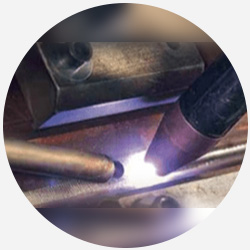
To properly bind the ends of mesh when forming a cylindrical filter or multiple layers, one of several welding techniques is usually employed. Depending on the needs of your filter, a spot, tungsten inert gas (TIG), plasma, or solder will be applied.
Simple, single-layer pieces spot welding is typically used to protect the integrity of the mesh. Spot welding is also employed when fabricating multi-layer extruder screens and gasket sock screens.
However, if the filter is more complex or needs to be leak-resistant, a TIG or plasma weld will be applied as they offer a more durable weld.
Read "4 Types of Welding Techniques Used on Woven Wire Mesh (Spot, TIG, Plasma, and Solder)" to learn more about welding wire mesh filters.
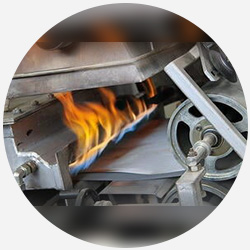
To ensure woven wire filter cloth can be molded into specific shapes and hold that shape, the mesh must undergo one of two heat treatment methods: annealing or sintering.
Annealing is the process of heating the mesh to a point in which the individual wires become softer and more malleable. As it minimizes the internal stress and hardness of the wires, it is used when you want your formed mesh to retain the desired shape.
Sintering is the heat treatment technique that heats the filter cloth until it's just below its melting point, subjecting the mesh to tremendous pressure at the same time. This technique is typically used when mesh opening accuracy is critical as it creates a more permanent bond at each wire intersection.
Read "Annealing vs Sintering Wire Mesh: Which Is Best for Me?" to learn more about heat treating your wire mesh filters.

Pleating is the process in which the filtration surface area of the mesh filter is increased without physically increasing the amount of filter cloth used. This is particularly useful when the space in which the filter can be housed is limited, but increased filtration capabilities are needed.
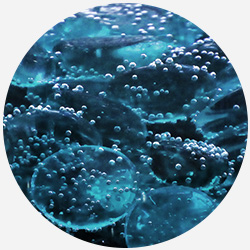
As filtration is a process that calls for equipment that is free of foreign objects, your mesh filters must be clean. This includes when it arrives at your facility.
To ensure your filters are free of dust, lint, or other foreign debris, you can request that your mesh undergo an ultrasonic cleaning. This involves placing the mesh in a solution bath that is agitated using high-frequency vibrations, freeing and removing unwanted particles from the mesh.
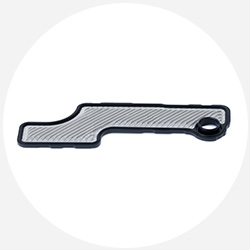
Some applications call for mesh filters to be placed into plastic injection molding to ensure the mesh properly fits the filter system without sacrificing durability or functionality. To maximize the quality of the filter, injection molding is carried out within the facility of the mesh supplier.

Calendaring is a technique used to reduce the high points of the filter cloth by applying heat and pressure to flatten the knuckles that form at each wire intersection. This strengthens the wire intersections, creating a more stable mesh filter that features a smooth, flat surface.
Implementing effective filter media is the easiest way to yield success no matter what your filter system looks like. When working with mesh filters, the easiest way to preserve the effectiveness of the mesh is to clean your filters regularly.
This helps prevent blinding, plugging, and other hindrances that can impact the efficiency of your filter. That said, a mesh filter can be cleaned by either backflushing, pressure washing, or chemical cleaning your mesh.
Backflushing is the cleaning technique in which the flow of the filter system is reversed, dislodging any contaminant particles that became stuck during normal filtration operations. This cleaning method stands out as it provides an easy means to reaching stubborn, hard-to-reach particles.
Pressure washing involves using a jet of pressurized water to lift contaminant particles and other unwanted from the surface of the mesh. This method works to minimize the need for manual scrubbing; however, it lacks the effectiveness seen when backflushing regarding purging the mesh of plugged particles.
Chemical cleaning is the cleaning technique the utilizes various chemicals to remove residual particles and debris from the surface of the mesh filter. These chemicals include detergents, solvents, and alcohol.
Chemical cleaning is possibly the most manual cleaning method of the three listed despite being the least effective against plugged contaminant particles.

Woven wire mesh, also known as metal mesh, is a pre-calculated arrangement of individual metallic wires that undergo a centuries-old weaving process to become interlocked. Each aspect of the mesh filter, including the layer configuration, wire diameter, weave pattern, alloy, and mesh count, are customizable, allowing woven wire mesh to deliver desirable results to a wide range of filtration systems.
Welded wire mesh is best defined as an array of metallic wires that are welded at each wire intersection instead of being woven together. Typically, a TIG or spot weld is applied, creating a mesh sheet that features mesh openings that are much more rigid and permanent than standard woven wire mesh.
To that end, because of limitations associated with the welding process, the mesh openings of welded wire mesh filters cannot be fabricated as fine as woven wire mesh filters can.
Metal fiber felt is defined as a unique filter constructed from hundreds of finely cut metallic fibers. These fibers are sintered together, creating a three-dimensional filter with small pore openings that deliver optimal filtration.
The individual fibers are randomly placed and bonded, resulting in a filter medium lacking pore size uniformity.
A wedge wire screen is a filter screen that employs v-shaped wires that are welded onto a supportive base. This helps create a slotted filter that resists blinding, can be cleaned with ease, and provides a durable means of proper filtration.
Perforated plate filters are filters constructed from a piece of sheet metal that feature several holes of a specific size in a specific pattern that are punched out using one of several fabrication techniques. As it's constructed from sheet metal, it can deliver maximum durability while maintaining the ability to filter out larger particles accurately.
The price of a wire mesh filter is dependent on several factors. Because they are fabricated to fit your specifc needs, they are made to order more than not.
While we can't give a definitive price, we can tell you that the following factors will be used to determine the price for your next order:
To that end, the quantity of filters is one of the main contributors to the cost of a filter on an individual basis. This is due mainly to the fact that mesh filters are typically made to order to best accommodate your needs.
As a result, several hours are required to set up the tooling and machinery needed to fabricate the filter. So, in short, as the volume of filters being ordered increases, the overall cost decreases.
Here are some pricing examples to give you a better idea of how much a fabricated woven wire component costs:
*Note that these are approximate price
When designing and incorporating mesh filters, there are three elements to the mesh that your mesh supplier needs to know to ensure your filter works as intended. Wire diameter, opening size, and mesh count all play a role in the effectiveness of a mesh filer.
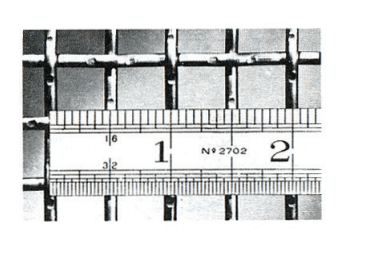 ire Diameter: The width of each
ire Diameter: The width of eachWhen designing a mesh filter, a “good, better, best system is used. The “good” category illustrates when one of the three elements listed is provided. “Better” illustrates your ability to provide two elements, and “best” illustrates your ability to provide all three.
So, let’s say you send the mesh supplier a quote request for 200 feet of filter cloth with a mesh count of 50 microns. While the mesh supplier can provide an adequate recommendation, the inquirer’s exact needs remain unknown.
NOTE: Designing a woven wire filter may require you to convert mesh count to micron rating and vice versa. Use the following chart as a tool to help you comminate the needs of your operation:
If you were to submit a request for a 60x60 mesh filter with a wire diameter of .0075, the mesh supplier would have enough information to identify the mesh count and wire diameter. In turn, the mesh supplier can also calculate the opening size.
To that end, if any two elements are provided, the third can be determined; however, for best results, you should have all three ready before reaching out to the mesh filter supplier.
Read "Wire Mesh Filters: What You Need To Know Before You Buy" for insight into the mesh filter buying process.
Sample Request
Woven wire mesh filter are a big investment. To ensure you are satisfied and confident with bulk orders, you have the opportunity to request samples of both cut pieces and fabricated components.
To do so, you must reach out and provide the following information:
Having said that, there are a few limitations to note. As quantity plays a significant role in the feasibility of a sample request, we will need to establish the resources and labor your request requires.
Typically, if a woven wire supplier doesn't have the capacity to produce the desired component or specification, your sample request will get turned down. Your request can also get turned down if the rest volume doesn't align with the amount of tooling and labor needed to produce the component.
When it comes to cost, the amount you can expect to pay depends of the form factor of the sample.
If you are simply looking for cut-to-size pieces to familiarize yourself with a particular specification, the price tag will be fairly inexpensive. Of course, the price will depend on the various parameters of the specification.
If you are looking to sample a custom component, however, the expected cost will spike significantly. This is due to the increased labor needed to set up the tooling and fabricate the component.
NOTE: The expected cost of a customized part will increase as the complexity of the part increases.
If after testing the requested sample you find the performance does not meet your expectations, you should set a meeting with the mesh supplier's engineering team. This will give you the opportunity to identify the reason where improvements can be made.
Maybe it's as simple as switching someihng like the weave pattern or alloy. Or maybe you discover that woven wire mesh isn't the answer.
Either way, it is critical that you sit down with the engineering team so you can coordinate your next steps.
Now, if you are satisfied with how the component turned out, you will want to establish how many finalized parts you will need. After you decide and determine whether you will need a purchase order or blanket order, the next step would be to request a quote.
Once you receive a quote, approve it, and submit a purchase or blanket order, production will start.
You can use one of the following avenues to request a quote:
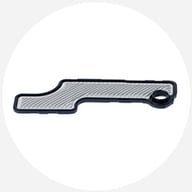
The pliable and versatile qualities of wire mesh filters allow them to be applied to several parts of an automobile. Tasks such as fluid regulation and exhaust gas filtration are all achievable using mesh filters as they are designed and customized to have precise pore openings.
To that end, the stainless steel wires used to fabricate mesh filters allow these filter filters to withstand high pressures and harsh temperatures.
Read "Woven Wire Mesh in the Automotive Industry" for more insight into how wire mesh benefits the automotive industry.
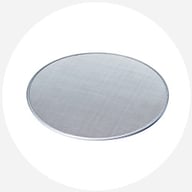
As all parameters of a mesh filter, including the alloy used, wire diameter, and mesh count, can be customized, mesh filters are known for delivering more efficient filtration in medical devices when compared to other materials such as plastic, textile, and paper. Its versatility allows it to provide maximum filtration in countess medical devices ranging from powder inhalers to blood filters to respirators.
Read "Woven Wire Filter Cloth in the Medical Industry" for more insight into how wire mesh benefits the medical industry.
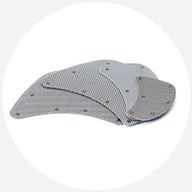
Plastic extrusion is a filtration process that subjects the filter media to constant extreme heat. It's because of this that stainless steel extruder screens are one of the most predominant filter media used during this process.
The heat resistance combined with its accurate pore openings allows these extruder screens to effectively remove contaminants from raw and recycled materials while maintaining an adequate flow rate. This helps to prevent product failure, product recalls, and, more importantly, customer harm.
Read "The Benefits of Extruder Screens In Plastic Extrusion (With Video)" for more insight into how wire mesh benefits the plastic extrusion process.
Wire mesh filters stand as one of the most versatile filter media available, delivering adequate throughput and desirable durability. From removing hazardous particles from blood to removing fault casing containments during the plastic extrusion process, wire mesh filters have the properties needed to withstand a vast list of filtration applications.
As all parameters are customized based on your needs, mesh filters are generally made to order. This means the price in which you can expect to pay ultimately depends on what your filtration operation looks like.
Now, to begin designing the ideal mesh filter, you must first gather the wire diameter, opening size, and mesh count for the best results. As always, if you have any questions as to what specifications work best for you, W.S. Tyler has you covered.